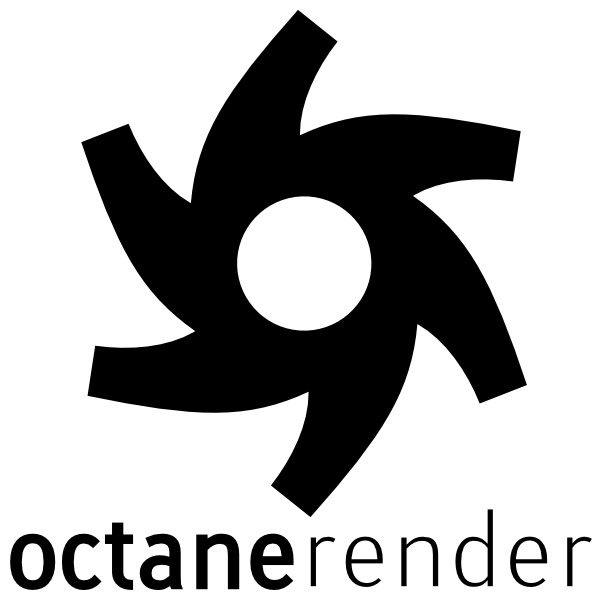Table of Contents
Introduction
OctaneRender, from OTOY, is a real-time, physically correct 3D rendering engine that uses GPUs instead of CPUs for processing. This is a relatively new approach, as traditional graphics rendering was done on CPUs instead. Graphics processors are ideal for highly parallel tasks like rendering, though, and it is easier to fit multiple video cards in a single computer than multiple CPUs.
The upcoming 2019 version of OctaneRender is adding support for the dedicated ray-tracing hardware in NVIDIA's RTX series of video cards, and a preview of the OctaneBench tool was released recently to show a sneak peek at what we can expect from this technology. We rounded up the whole Quadro RTX card line – along with the Titan RTX – to see how they compare to each other and how much of a boost RTX tech can provide. Please keep in mind that this is a preview, selected to show off RTX technology, and results may vary.
Test Methodology & Hardware
Each graphics card was run through the benchmark once, and the scores with RTX on and off were recorded. In a full performance review article I usually run applications multiple times, but OctaneBench is remarkably steady in its results from one run to the next – and since this is just a preview, I didn't want to spend a lot of extra time repeating the test for additional data points.
Since we are just looking at individual video card performance, and OctaneRender is almost entirely GPU dependant, the test platform really doesn't matter much aside from maintaining the same configuration and drivers across all of the tested cards. The open testbed I had available happened to be an X299 based system with a Core i9 9940X installed, and while that CPU is overkill for Octane (its 14 cores will be wasted on this application) is meets the basic needs of providing a full PCI-Express 3.0 x16 slot for the video card to run in.
Here are full platform details, including links to the OctaneBench 2019 Preview and the NVIDIA drivers we used, for anyone interested:
| Test Platform | |
| CPU | Intel Core i9 9940X |
| CPU Cooler | Noctua NH-U12DX i4 |
| Motherboard | Gigabyte X299 Designare EX |
| RAM | 8x DDR4-2666 16GB (128GB total) |
| Video Card | NVIDIA Titan RTX 24GB NVIDIA Quadro RTX 8000 48GB NVIDIA Quadro RTX 6000 24GB NVIDIA Quadro RTX 5000 16GB NVIDIA Quadro RTX 4000 8GB |
| Hard Drive | Samsung 960 Pro 1TB |
| Software |
Windows 10 Pro 64-bit (version 1809) |
Benchmark Results
Here are the OctaneBench 2019 Preview scores for each of the GPUs we tested, listed from fastest to slowest. Since this version of OctaneBench measures both, performance with RTX technology turned off is shown in light green and with it enabled in a darker shade:
Analysis & Conclusion
The relative performance of the Quadro cards to each other should be no surprise, as they follow the model numbering assigned by NVIDIA. However, it is worth noting that the RTX 6000, RTX 8000, and Titan RTX basically all perform at the same level – with less than half a percent spread when RTX is enabled. The Titan costs far less than these high-end Quadro cards, and has the same amount of onboard memory as the RTX 6000 – making it a great value for users who want powerful GPU rendering and a lot of VRAM. However, it does have a weakness: its dual-fan cooling system only works well as a single card, or possibly in a pair in a chassis with great airflow. The single-fan, rear-exhaust cooler on the Quadro cards is much better for multi-GPU use, allowing up to four GPUs stacked together.
Cooling aside, the even bigger takeaway here is the massive improvement that RTX technology brings. On average, these cards were 190% faster with RTX enabled! To look at that another way, rendering the scene used in this benchmark with RTX on took less than 35% of the time that it did with RTX turned off. That is a huge boost, which is only available on the new RTX family of GPUs.
It is also worth noting that OTOY has said this is a best-case example of RTX's capabilities. Right now it sounds like the speed-up this tech provides depends heavily on the scene itself, with the potential for smaller increases in other situations. Your mileage may vary.
Whatever your needs and budget are, getting a RTX-series card will give a big boost over older models in OctaneRender 2019!
What Is the Best Quadro Card for OctaneRender 2019?
NVIDIA's Quadro RTX 6000 and RTX 8000 offer the same fantastic performance in OctaneRender 2019, with the only difference being the amount of onboard memory: 24GB on the RTX 6000 and 48GB on the RTX 8000. Both are ideally suited to multi-GPU usage as well, and we can fit up to four of them in a tower or rackmount chassis. If you don't need that many GPUs, the Titan RTX offers similar performance and the same 24GB as the RTX 6000 – but is limited to one or at most two cards due to its dual-fan cooling system.
For comparison, and especially for those with a more limited budget, NVIDIA GeForce RTX results can be found in another article.
Looking for a
Rendering Workstation?
Puget Systems offers a range of workstations and render nodes designed specifically for rendering engines such as V-Ray, OctaneRender, and Redshift.
